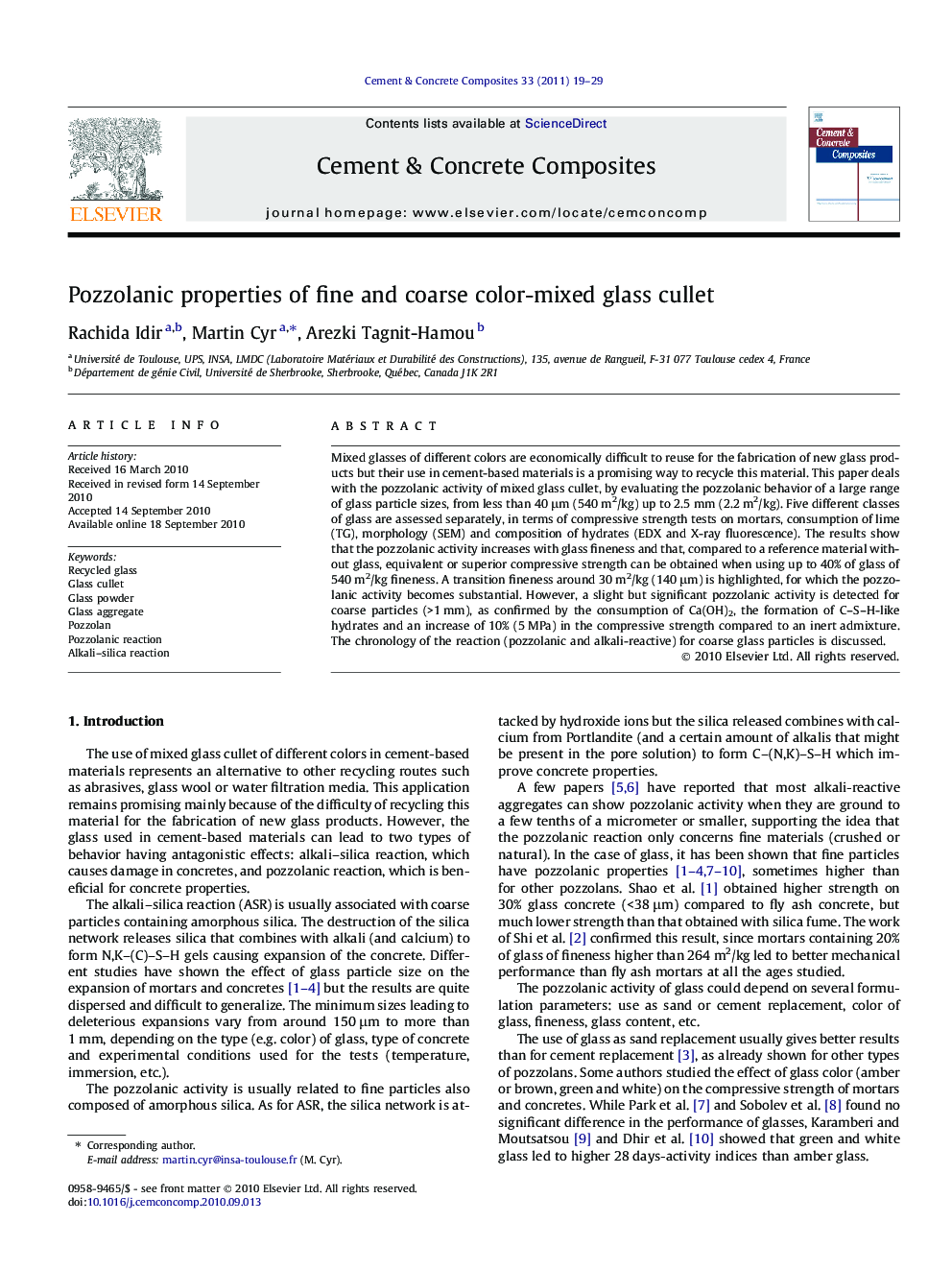| Article ID | Journal | Published Year | Pages | File Type |
|---|---|---|---|---|
| 1454948 | Cement and Concrete Composites | 2011 | 11 Pages |
Mixed glasses of different colors are economically difficult to reuse for the fabrication of new glass products but their use in cement-based materials is a promising way to recycle this material. This paper deals with the pozzolanic activity of mixed glass cullet, by evaluating the pozzolanic behavior of a large range of glass particle sizes, from less than 40 μm (540 m2/kg) up to 2.5 mm (2.2 m2/kg). Five different classes of glass are assessed separately, in terms of compressive strength tests on mortars, consumption of lime (TG), morphology (SEM) and composition of hydrates (EDX and X-ray fluorescence). The results show that the pozzolanic activity increases with glass fineness and that, compared to a reference material without glass, equivalent or superior compressive strength can be obtained when using up to 40% of glass of 540 m2/kg fineness. A transition fineness around 30 m2/kg (140 μm) is highlighted, for which the pozzolanic activity becomes substantial. However, a slight but significant pozzolanic activity is detected for coarse particles (>1 mm), as confirmed by the consumption of Ca(OH)2, the formation of C–S–H-like hydrates and an increase of 10% (5 MPa) in the compressive strength compared to an inert admixture. The chronology of the reaction (pozzolanic and alkali-reactive) for coarse glass particles is discussed.
